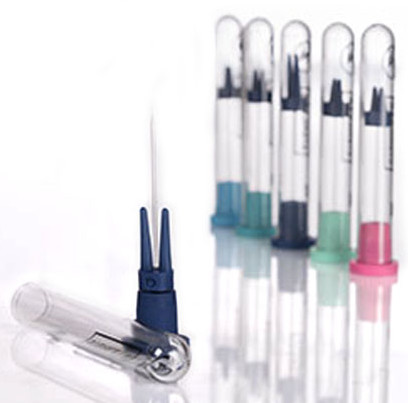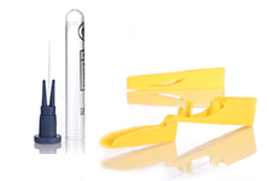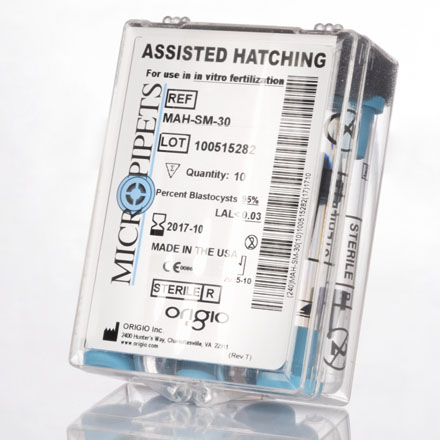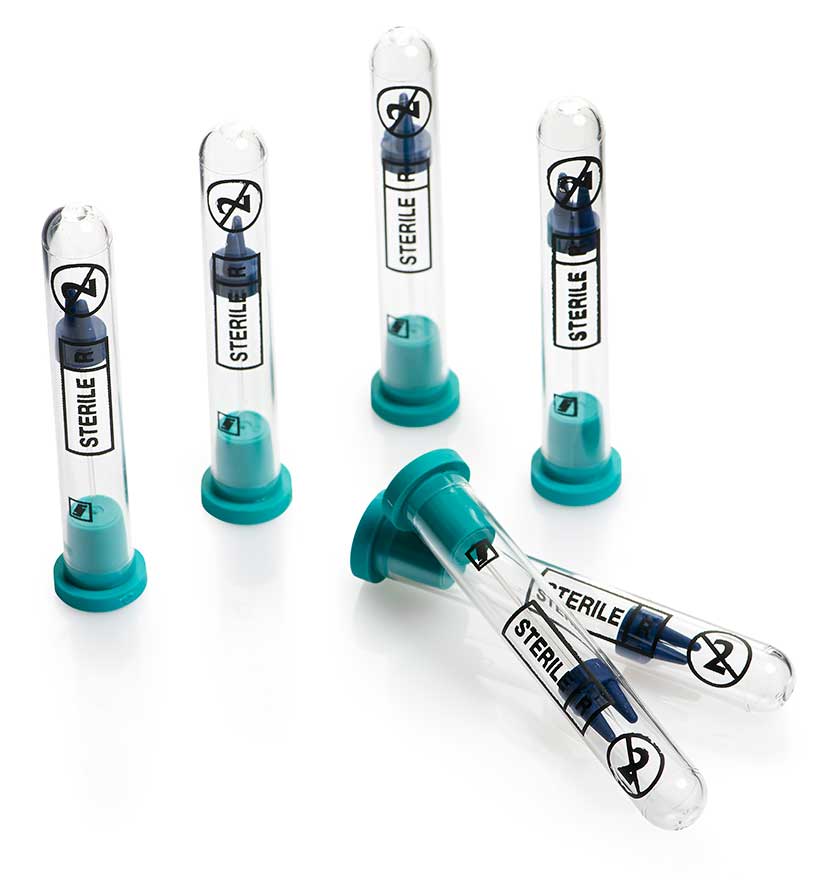ORIGIO® Micropipettes
Trusted micropipettes for micromanipulation procedures
The range of ORIGIO micropipettes is extensive, catering to various stages of the IVF cycle. Each micropipette is specifically crafted for clinical applications, spanning all micromanipulation procedures and is meticulously designed to meet the standards of clinical use, helping to ensure precision and reliability in tasks such as intracytoplasmic sperm injection (ICSI), embryo biopsy, and assisted hatching.
- First to market commercially! Quality pipettes available since 1992
- More than 1.5 million micropipettes manufactured each year
- Automated production – focus on innovation, consistency and deliverability
- Every pipette is checked and measured repeatedly during manufacture
ORIGIO micropipettes are designed to be used in conjunction with a micromanipulator syringe, within the micromanipulation equipment system, and with a microscope.
Availability
These products are available for sale in Europe, the USA, Canada and Australia, as well as selected countries in the rest of the world.

Key Product Information
ORIGIO® ICSI Micropipettes
Our extensive range of ICSI micropipettes is versatile and precisely designed to inject sperm into oocytes . We offer a large range so we can meet the diverse needs and preferences of embryologists worldwide. Whether you need specific dimensions or have ergonomic requirements, our ICSI micropipettes offer a suite of options to help enhance performance in the lab.
Our customer’s favourite: ICSI SlimLine
The size of these popular pipettes is designed to help maximize normal fertilization rate.4
ICSI SlimLine pipettes are designed with a long parallel taper that some will find more flexible than our standard ICSI pipettes. When injecting they keep the rigidity that users like from the ORIGIO micropipettes.

“The design of the new ICSI Slimline pipet allows for an extremely gentle injection procedure, which practically eliminates oocyte damage.”
Marlena Duke, M.Sc.,
Embryology Laboratory Director, RMA of New York
The ORIGIO SlimLine ICSI micropipette is designed with a small inner diameter and a longer parallel taper to:
- Provide enhanced fluid control 1, 2
- Maximize normal fertilization rate4
- Minimize postinjection degeneration 2
- Reduction in tripronuclear fertilization 2
- Increase the proportion of good-quality embryos and higher cell numbers 2
- Help minimize damage to the oocyte by creating a small entry point
Classic ORIGIO ICSI Micropipettes
If you do prefer a pipette with a short taper, we have a full range of ICSI micropipettes available.
Key features
- Short taper when a more rigid tip is needed; some find this easier to puncture the oocyte
- Small inner diameter minimizes the likelihood of oocyte damage 1, 2, 3
- Short bevel helps reduce the risk of sperm getting caught on glass surface during injection
ORIGIO® Biopsy Micropipettes
Our micropipettes are designed with precision and flexibility in mind, supporting operators with the right tools for the distinct requirements with all IVF biopsy techniques.
From polar body examinations to blastomere and trophectoderm procedures, our tailored biopsy micropipettes help to empower handlers with the reliability and performance needed to excel in the intricacies of genetic testing.

- Designed to remove polar bodies or other cells for genetic analysis
- Polar body biopsy micropipette options are: flat/polished, beveled/polished, and beveled/spiked
- CooperSurgical biopsy pipettes with flat tips are designed to reduce the risk of damaging the cells or embryos during biopsy6
- Blastomere biopsy options come in five sizes and include small – medium: a range of inner diameter (20-30µm ID) allow biopsy of blastomeres and trophectoderm

 My Clinic is in the United States
My Clinic is in the United States My Clinic is in Canada
My Clinic is in Canada


